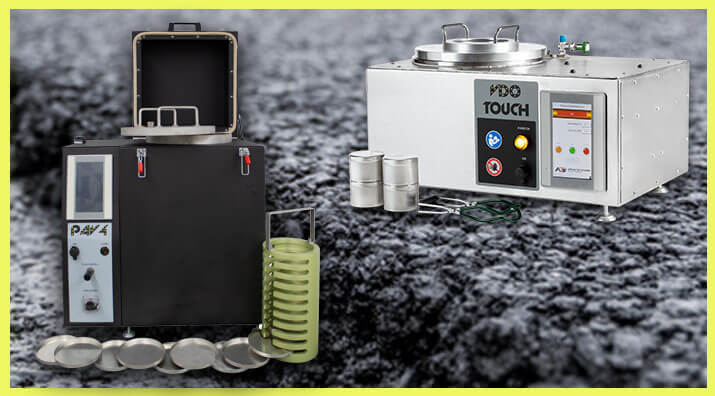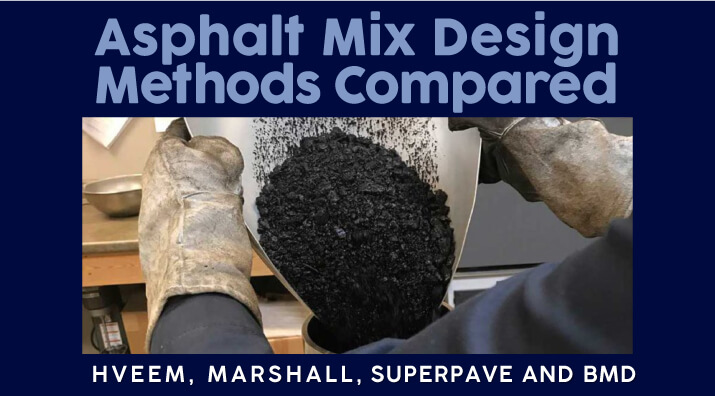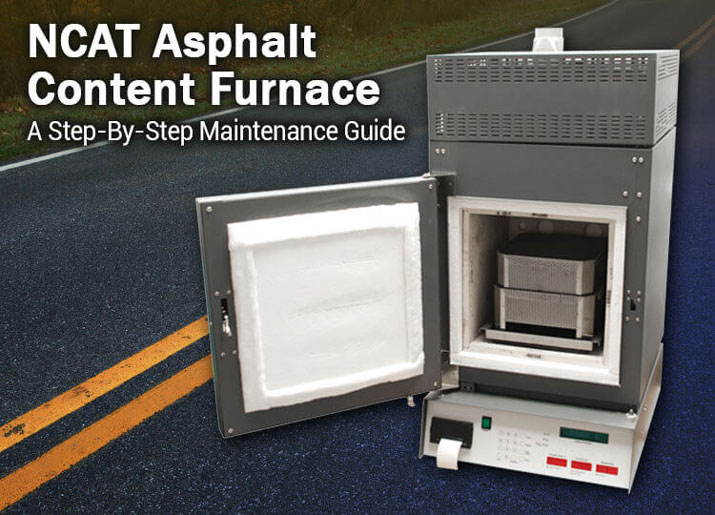The list of essential ingredients for hot mix asphalt is exceedingly short for a composite material with such complex characteristics: asphaltic cement and mineral aggregates. Modern, flexible pavements with different mix designs are simply variations in the properties and ratios of the essential ingredients and adjustments to temperatures, handling, and placement methods. This article is an overview of past and present asphalt mix design methods and equipment, including Hveem, Marshall, Superpave, and Balanced Mix Design (BMD).
- Log in
- Favorites List
-
Shopping Cart
You have no items in your shopping cart.
- Gilson Chat
Blog posts tagged with 'Pavement Design'
Have questions about your materials testing equipment? We have the answers to these questions and much more right here! Check back monthly for long-form blog posts, how-to guides and infographics. We’ll address industry insights, the operation and maintenance of specific equipment, and our product line recommendations, all designed to better serve you.
Bookmark this page, add it to your RSS reader, or subscribe to our newsletter, so you never miss a hot topic.
Balanced Mix Design is a practical and common-sense approach to constructing long-lasting asphalt pavements. The design of asphalt mixes traditionally follows a prescriptive, volumetric path. Materials are selected and combined to meet the requirements of the specification with little evidence of what their real performance will be in a localized application or a certain environment. Researchers and practitioners alike have concluded that just mixing the specified ingredients in the stated volumes is a poor predictor of long-term asphalt pavement performance. As one prominent paving engineer put it, “Let’s stop using the recipe to determine if the cake is good.”
This blog provides an informative guide on why direct shear testing is essential, and we guide you on what equipment you need to perform the test based on ASTM D3080 and AASHTO T 236.
A multilayer asphalt design must perform as a single unit to withstand heavy traffic loads. In our latest blog, we’re taking a look at how asphalt tack coat is used to strengthen pavements, and how shear strength is tested to ensure optimal performance.

In this blog, we explore the two primary forms of soil classification for geotechnical purposes. Visual and laboratory classifications of soils are two distinct procedures that are part of a complete soils investigation.
In order to ensure that your Gilson Asphalt Content Furnace operates smoothly for many years, we’ve outlined some maintenance procedures and tips to follow.
When using your NCAT furnace, it’s important to follow some basic weekly maintenance procedures. In this blog post, we’ll provide an easy step-by-step guide, complete with a list of do’s, don’ts, and maintenance help for the NCAT.

A method to simulate long-term, oxidative aged asphalt binder is important for predicting distress in asphalt as it ages. A Pressure Aging Vessel is a great solution and this blog post will highlight the background and benefits of these powerful machines.
If you need to accurately measure the effect of heat and air on asphalt binder, a good option to consider is a Rolling Thin Film Oven (RTFO). This blog post outlines everything you need to know from the procedure to benefits and equipment recommendations.
Comparing the pros and cons of solvent extraction vs. the furnace ignition method for asphalt content testing will help you select the best procedure for your application.
- 2025
- 2024
- 2023
- 2022
- 2021
- 2020
- 2019
- 2018
- 2017
- 2016
- 2015























